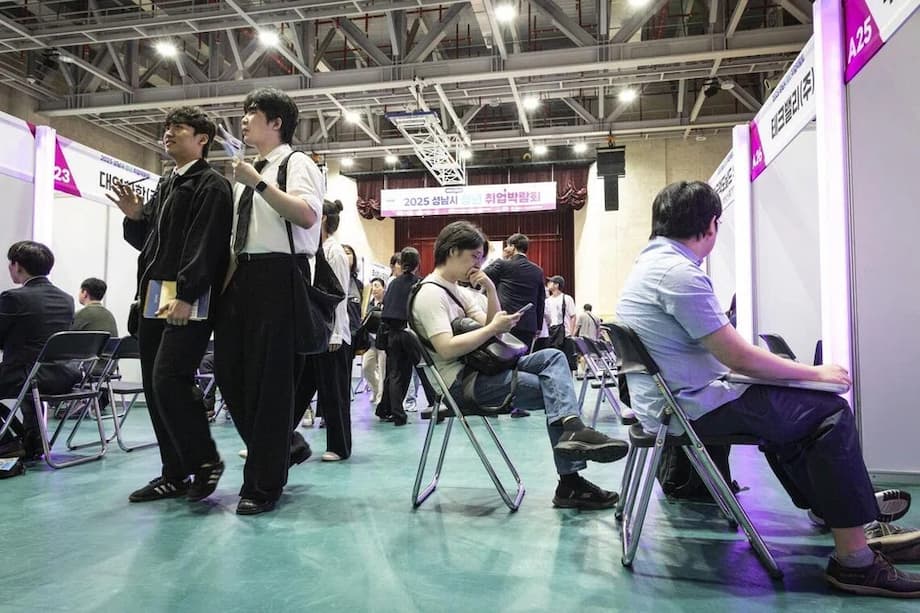Why a shorter week is back on the agenda
South Korea is moving toward a four and a half day workweek by cutting the legal workweek from 40 to 36 hours with no reduction in pay. The initiative, a central pledge of President Lee Jae Myung, seeks to curb long hours and lift quality of life while keeping the economy competitive. The government wants average working hours to fall below the OECD average by 2030. In 2023, the average Korean worker logged about 1,874 hours, one of the highest totals in the developed world. The long term ambition is a four day week, or 32 hours, once the economy can support the change.
Officials plan to submit legislation by the end of 2025, including a Reduced Working Hours Support Act that would offer subsidies and tax incentives to employers who adopt shorter schedules. A tripartite task force of labor unions, business groups, and government agencies is working on a roadmap. South Korea shifted to a five day week only in 2011 after a decade of phased rollout. The new plan would be the next step in a long restructuring of working time.
Business leaders argue that shorter hours without clear efficiency gains would raise costs and chip away at competitiveness. Hourly output remains well below leading economies. In 2023, Korean workers produced about US$54.64 of GDP per hour, compared with roughly US$97.05 in the United States and higher levels in Germany, France, and Spain. This gap weighs heavily on firms that already face high labor expenses and a rigid job market.
Supporters counter that better rest can raise productivity over time and reduce burnout, accidents, and turnover. They also argue that a shorter week could help address demographic challenges by giving families more time for care and daily life.
What the government is proposing
Under the current outline, the legal standard would drop to 36 hours per week. The state would cushion the transition with financial support, especially for smaller firms. Ministries are studying sector specific options so that customer facing jobs, factories, hospitals, logistics hubs, and public services maintain coverage without pushing workers into involuntary overtime.
The Ministry of Employment and Labor has confirmed it is coordinating with other agencies on the design and on how shorter hours might affect paychecks. A central question is whether the 36 hour standard would lower the 40 hour baseline, change the 12 hour weekly overtime allowance under the 52 hour system, or both. Officials say details remain under review and preliminary plans have been briefed to the Presidential Committee for State Affairs.
Vice Minister Kim Min seok has told lawmakers that coordination is active and income effects are being studied. He described the plan as a work in progress while the government reviews legal options and cost impacts.
Specific details have not been finalized. We are reviewing how a 36 hour standard would affect income and overtime rules.
Pilots are being used to test the approach. Local programs are scheduled to run through 2027 with evaluations of output, service quality, and employee wellbeing. Results from trials will guide how fast the national plan can move and which sectors need tailored rules.
Key policy questions still under review
- Whether the reduction applies to the 40 hour standard, the 12 hour overtime cap, or a combination of both
- How to maintain full wages while hours fall, especially for hourly workers in services and manufacturing
- Rules for scheduling, shift coverage, and peak demand in retail, hospitality, healthcare, logistics, and public services
- Size, duration, and eligibility of subsidies and tax credits for small and medium employers
- How the weekly rest day allowance and other mandated premiums interact with a 36 hour framework
- Whether state support should be tied to measured productivity improvements, training, or digital upgrade plans
How these issues are resolved will shape whether the shift reduces stress without undermining output or service levels.
The productivity puzzle
Reducing hours while holding pay steady increases unit labor costs unless output per hour rises. That is the core anxiety for employers. Business associations argue that a broad mandate would penalize firms that cannot easily automate or reorganize their workflows. Some recommend a flexible model that lets companies adopt shorter weeks only after achieving internal productivity gains.
Recent analysis highlights the challenge. One study estimated Korean annual labor productivity per worker at about US$65,000 in 2023, ranking 22nd among 36 OECD economies, roughly half the level in Belgium and Iceland where many employers already operate four day schedules. Several years of wage growth have outpaced productivity gains, widening the gap between pay and output. If hours fall and wages stay flat, that gap could grow and pressure margins, especially in services.
Productivity is driven by many factors, including capital investment, digital adoption, skills, process design, and management practices. Shorter hours alone do not guarantee efficiency. The best outcomes often come when work time reform is paired with clear goals, leaner meetings and reporting, better use of collaboration tools, improved shift handovers, and front line empowerment to fix bottlenecks.
How productivity is measured
Hourly labor productivity typically reflects real output divided by hours worked. It tends to rise when a firm automates routine tasks, reduces downtime, streamlines decisions, and equips workers with better tools and training. In labor intensive services, such as food service or childcare, measured output per hour is harder to lift. That is why support for technology upgrades and process redesign often matters as much as payroll subsidies in a shorter week transition.
Worker support, public skepticism
Surveys of salaried employees show strong interest in shorter weeks, even with some trade offs in pay. Many workers hope for better work and life balance, less stress, and more time for learning or family commitments. Long working hours and a culture of presenteeism have been persistent concerns in offices and factories alike.
Public opinion is not uniformly aligned. A nationwide poll released in early October 2025 found that 63 percent of adults opposed the four and a half day plan while 32 percent supported it. Opposition exceeded support in every age group, and was especially strong among older respondents, housewives, the self employed, and blue collar workers. Supporters of the ruling party were divided, while opposition party supporters were overwhelmingly against.
The split reflects how the policy affects people differently. Salaried professionals in large firms can often redistribute tasks, but small shop owners and hourly workers fear reduced opening hours, lower income, or more pressure to work overtime. Parents welcome the promise of more time at home, but many say it must be paired with reliable childcare, predictable schedules, and fair pay to make a difference.
Small business realities
Micro and small businesses carry the highest risk in a shift to shorter weeks. Restaurants and convenience stores cannot close during peak hours without losing sales. Manufacturers on tight delivery schedules may need to add shifts, hire more staff, or pay more overtime. If the legal standard falls to 36 hours while wages are maintained, the employer cost per hour rises unless efficiency improves.
A sensitive point is the weekly rest day allowance, a mandatory payment that dates to the 1950s to guarantee a paid day of rest. Advocates for small business argue the allowance is outdated if the country moves beyond a five day pattern. They also warn that applying the Labor Standards Act fully to workplaces with fewer than five employees, which have long been exempt from many rules, would produce a sudden jump in costs. One estimate suggested a micro business with four employees could see annual labor costs rise by about 42 million won if rules expand without offsets.
Song Chi young, head of the Korea Federation of Micro Enterprise, has been blunt about the trade offs. He argues that the package must be balanced for very small employers.
If the government intends to introduce a four and a half day workweek, it must first abolish the weekly rest day allowance.
Small business groups also point to recent minimum wage increases and argue for more flexible tools, such as sector specific minimum wages or biennial adjustments, to keep payrolls stable during the transition. They want targeted tax credits, simpler compliance, and help with training and technology so that shorter hours do not force staff cuts or store closures.
What can work in practice
The strongest evidence from abroad shows that shorter weeks tend to succeed when the focus is on doing work differently, not just doing less of it. That often means reducing low value meetings, simplifying approvals, improving task handoffs, and investing in tools that cut paperwork. Managers need to redesign schedules and staffing models so teams can deliver service continuously without excessive overtime.
Policy makers can make the transition smoother with a package that addresses both sides of the equation. Employers need breathing room to experiment, and workers need clear protection against wage loss or work intensification. Targeted support for small firms, combined with productivity programs, will make adoption more resilient across different industries.
- Phased timelines by sector and firm size, with pilots and opt in windows tied to reporting on output and service quality
- Flexible scheduling models, such as rotating short Fridays, compressed shifts, or alternating days off, based on the needs of each workplace
- Tax credits and grants for digital tools, process redesign, and training that raise output per hour, not just headcount
- Clear rules on overtime to prevent de facto longer days, including daily rest and predictable scheduling requirements
- Support for childcare, elder care, and transit so that time saved becomes usable time for families
- Simple compliance templates for small employers, with advisory support and reduced paperwork
Equity and the dual labor market
Experts warn that reform designed only around large companies could widen inequality. Korea has a dual labor market. Secure jobs with higher pay and benefits are concentrated in large firms and the public sector. Many workers in small businesses and in non regular or platform roles face unstable hours and lower wages. If only big employers adopt shorter weeks quickly, the gap in both time and income could grow.
A fair transition will need specific attention to low productivity services, subcontractors, and platform workers. Without guardrails, service firms may cap hours by cutting shifts rather than raising hourly pay, which would reduce monthly income for the very workers reform is meant to help. Targeted subsidies, digital upgrades for small retailers and clinics, and protections for non regular workers can reduce that risk.
Timeline, pilots, and what to watch
The government aims to send a bill to the National Assembly by the end of 2025. The law would set the 36 hour standard and launch the support framework. Detailed rules are likely to be phased in, with pilots and sector schedules updated as data comes in. The tripartite task force is expected to outline milestone dates and the metrics agencies will track.
Local and sector pilots are scheduled to run until 2027, with evaluations of productivity, worker wellbeing, customer satisfaction, and turnover. Transparent reporting will be essential. Employers will watch how the law treats overtime, weekly rest rules, and wage protection. Workers will watch for predictable schedules and safeguards against workload compression. Small firms will look for simple paperwork and fast access to help, not just promises of future tax deductions.
If the plan links shorter hours to real productivity support, the country could see a careful but durable shift in how work is organized. If it leans only on mandates, the risk is a patchwork where some workers gain time while others face heavier costs or unstable pay. The debate now under way is about striking the balance between better lives and a competitive economy.
Key Points
- Seoul is preparing a law to cut the legal workweek from 40 to 36 hours with no pay cut, a step toward a four day week over time
- The government plans to submit the bill by the end of 2025 and to support adoption with subsidies, tax credits, and pilots
- Average working time in 2023 was about 1,874 hours per worker, well above the OECD average; productivity per hour lags leading economies
- Employers warn that shorter hours without efficiency gains will raise unit labor costs and hurt competitiveness
- Public opinion is divided, with a nationwide poll showing 63 percent opposed to the four and a half day plan
- Small businesses fear higher costs from overtime and legacy rules like the weekly rest day allowance; they seek simpler compliance and targeted aid
- Ministry officials say key design choices, including overtime rules under the 52 hour system, remain under review
- Pilots through 2027 will measure output, service quality, and worker wellbeing to guide phased implementation
- Success hinges on pairing shorter hours with productivity programs, training, and digital upgrades, particularly for low productivity services












